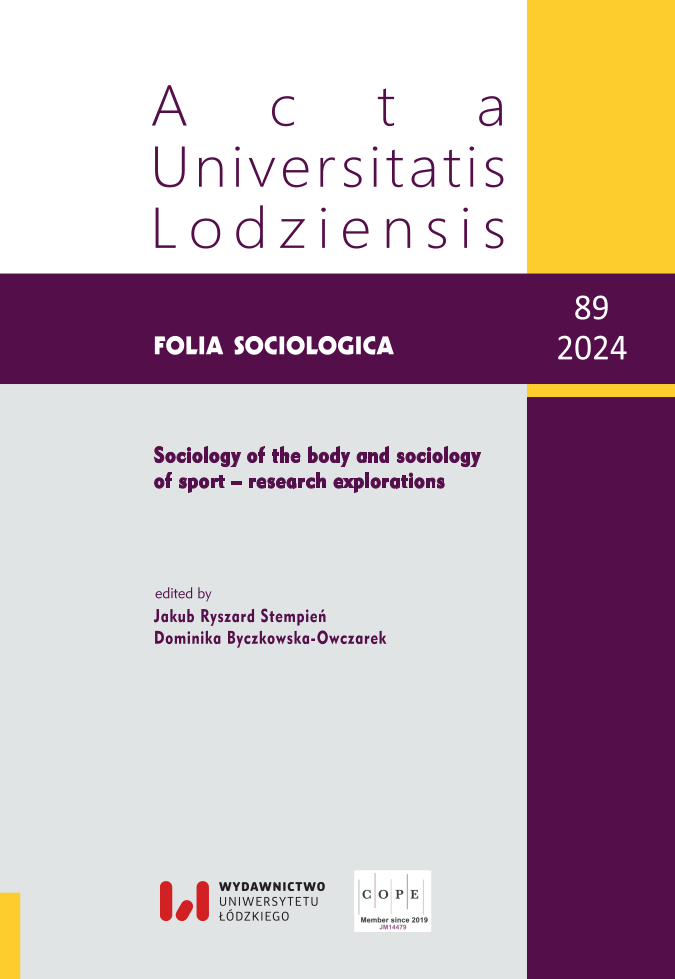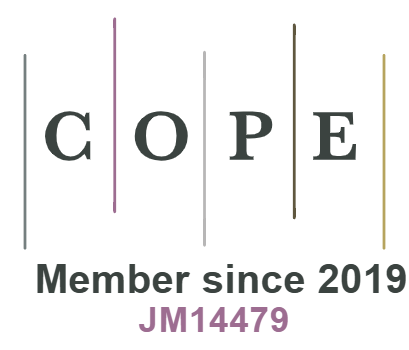Radical socialization? Analysis of the secondary socialization process in the table tennis environment
DOI:
https://doi.org/10.18778/0208-600X.89.02Keywords:
secondary socialization, the social dimension of sports, values in sports, table tennis players, qualitative studyAbstract
The article is devoted to the analysis of the secondary socialization process in the table tennis environment. Sports communities represent a specific case study in this context because the secondary socialization processes occurring in them seem more radical. The sports environment is characterized by highly specific features and values conveyed, and interest in this phenomenon may be heightened because sports are a relatively less studied area in terms of their socialization impact on individuals. The main goal of the text is to analyse the specificity of the table tennis environment as a secondary socialization environment. More specific goals include issues related to the specific bonds and relationships formed in such an environment, the specific communication system (slang and characteristic meanings), and the impact of the sports environment on the relations of table tennis players with the world outside of sports. The qualitative analysis allowed for discovering unique patterns that characterize the socialization process in the sports environment. Among these patterns is the blurring of boundaries between values acquired in the sports environment and the external world, as the respondents transferred sports principles to everyday life practices. The totality of socialization in the sports environment also influences the formation of a specific “socialization bubble” and problems in establishing relationships with people not belonging to the sports world: the sports environment became, for many respondents, a reality in itself, generating bonds, rules, and communication patterns for its participants.
References
Babbie E. (2013), Logika doboru próby, trans. A. Kloskowska-Dudzińska, Badania społeczne w praktyce, Warszawa, pp. 204–206.
Google Scholar
Benson A.J., Evans M.B., Eys M.A. (2016), Socialization in team sport, “Scandinavian Journal of Medicine Science in Sports”, no. 26, pp. 463–473. https://doi.org/10.1111/sms.12460
Google Scholar
Berger P., Luckamnn T. (2010), Społeczne tworzenie rzeczywistości. Traktat z socjologii wiedzy, trans. J. Niżnik, Warszawa.
Google Scholar
Blumer H. (2007), Interakcjonizm symboliczny. Perspektywa i metoda, trans. G. Woroniecka, Zakład Wydawniczy NOMOS, Kraków, p. 61.
Google Scholar
Ciok A., Lenartowicz M. (2020), Sportowi migranci. Zagraniczni zawodnicy w polskich ligach tenisa stołowego, AWF Warszawa, Warszawa (ISBN: 978-83-61830-43-6).
Google Scholar
Dziubiński Z. (2011), Socjalizacja do kultury fizycznej, [in:] Dziubiński Z., Krawczyk Z., Lenartowicz M., Socjologia kultury fizycznej, Warszawa.
Google Scholar
Elias N. (2008), Społeczeństwo jednostek, Wydawnictwo Naukowe PWN, Warszawa.
Google Scholar
Frankfort-Nachmias Ch., Nachmias D. (2001), Metody badawcze w naukach społecznych, Poznań, pp. 220–239.
Google Scholar
Hałas E. (2006), Interakcjonizm symboliczny. Społeczny kontekst znaczeń, Wydawnictwo Naukowe PWN, Warszawa, pp. 70–81.
Google Scholar
Hill A., Schücker L., Hagemann N., Babel S.A., MacMahon C., Strauß B. (2021), Attentional focusing in running: Implicit focus manipulations reflect the effects for explicit instructions, “International Journal of Sport and Exercise Psychology”, vol. 19(2), pp. 203–214.
Google Scholar
Kacperczyk A. (2014), Autoetnografia – technika, metoda, nowy paradygmat?: o metodologicznym statusie autoetnografii, “Przegląd Socjologii Jakościowej”, vol. 10(3), pp. 32–75.
Google Scholar
Kowalczyk S. (2012), Podstawy i zakresy społecznej funkcji sportu, [in:] Dziubiński Z., Jankow-ski K.W. (ed.), Kultura fizyczna a socjalizacja, Warszawa, p. 28.
Google Scholar
Lenartowicz M., Ciok A. (2020), Foreign players in top Polish table tennis leagues: sport cultures differences and perceived impact on Polish table tennis, “Acta Universitatis Lodziensis. Folia Sociologica”, no. 75, pp. 15–32, https://doi.org/10.18778/0208-600X.75.02
Google Scholar
Leo F.M., López-Gajardo M.A., González-Ponce I., García-Calvo T., Benson, M. (2020), How socialization tactics relate to role clarity, cohesion, and intentions to return to soccer teams, “Psychology of Sport and Exercise”, no. 50, 101735.
Google Scholar
Lipiec J. (2012), Socjalizacyjna lekcja sportu, [in:] Dziubiński Z., Jankowski K.W. (ed.), Kultura fizyczna a socjalizacja, Warszawa, p. 19.
Google Scholar
Loland S. (2001), Fair Play in Sport. A Moral Norm System, London.
Google Scholar
Mead G.H. (1975), Umysł, osobowość i społeczeństwo, trans. Zofia Wolińska, Państwowe Wydawnictwo Naukowe, Warszawa.
Google Scholar
Miller P.K., Van Der Zee S., Elliott D. (2022). Pain, culture and pedagogy: a preliminary investigation of attitudes towards “reasonable” pain tolerance in the grassroots reproduction of a culture of risk, “Psychological Reports”, vol. 125(2), pp. 1086–1102.
Google Scholar
Newman H.J.H., Howells K.L., Fletcher D. (2016), The Dark Side of Top Level Sport: An Autobiographic Study of Depressive Experiences in Elite Sport Performers, “Frontiers in Psychology”, no. 7, pp. 1–12.
Google Scholar
Stavrou N.A.M., Psychountaki M., Georgiadis E., Karteroliotis K., Zervas Y. (2015), Flow theory – goal orientation theory: positive experience is related to athlete’s goal orientation, “Frontiers in Psychology”, no. 6, pp. 1–12.
Google Scholar
Szacka B. (2003), Wprowadzenie do socjologii, Warszawa, p. 137.
Google Scholar
Tillmann K.J. (2005), Teorie Socjalizacji. Społeczność, instytucja, upodmiotowienie, trans. G. Bluszcz, Wydawnictwo Naukowe PWN, Warszawa, pp. 8–19.
Google Scholar
Published
Versions
- 2024-09-16 (2)
- 2024-06-30 (1)
How to Cite
Issue
Section
License

This work is licensed under a Creative Commons Attribution-NonCommercial-NoDerivatives 4.0 International License.










